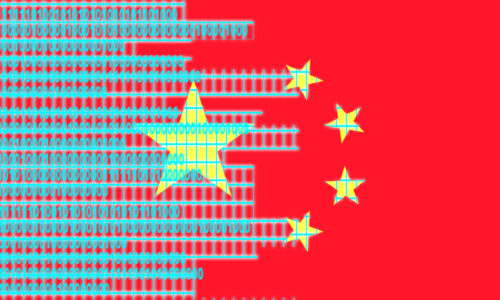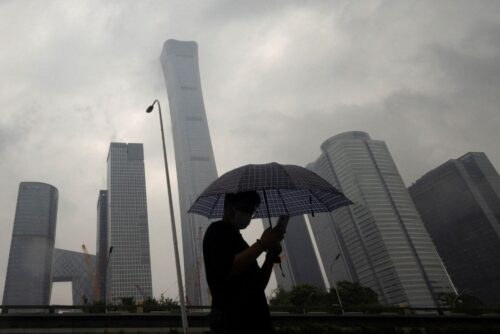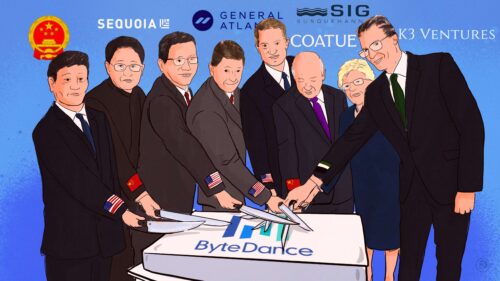SHEIN’s fast-fashion sales machine earns billions as new competitors launch
SHEIN has revolutionized fast fashion as a trendy, social-media-fueled global brand, and now Pinduouo and others are imitating its model of cheap prices, fast delivery, and small-batch manufacturing. But are these lightning-fast supply chains ethical or sustainable?

On Saturday, a Chinese business news website reported that SHEIN 南京希音电子商务, the global fast-fashion company that came out of nowhere to become the favorite shopping app of many American teenagers, sold $16 billion worth of goods in the first half of the year. That would represent a year-on-year growth rate of over 50%, and it sets the company on course to complete its annual sales target of $30 billion ahead of schedule.
China news, weekly.
Sign up for The China Project’s weekly newsletter, our free roundup of the most important China stories.
Over the past three years, SHEIN’s performance has been explosive, even though its earlier growth rates have gradually slowed down:
- In 2020, revenue exceeded $10 billion for the first time, with a year-on-year growth rate of 250%.
- In 2021, revenue reached $20 billion, with a year-on-year growth rate of 60%.
- In the second quarter of this year, SHEIN’s mobile app was downloaded 6.8 million times in the U.S., which was more than the Amazon app, and although the Amazon app has three times more monthly active users than the SHEIN app, the gap is closing: SHEIN’s number of daily active users in the second quarter reportedly exceeded 30 million, with a year-on-year growth rate of 15%.
SHEIN has now set itself two core objectives for this year: increasing customer unit prices and profit margins. SHEIN’s net profit margin in 2021 was about 6%, but this has decreased slightly in the first half of this year, mainly because of rising procurement costs, which account for about 35% of gross merchandise volume (GMV), i.e., the total ecommerce sales value, while the cost of logistics increased to around 20% of GMV, and marketing costs increased to about 8%.
The SHEIN model and its copycats
SHEIN is probably China’s most enigmatic company, or its “most mysterious billion-dollar company,” as one investor put it. Even though SHEIN has built its success on social media and TikTok influencers, the company itself prefers to stay out of the limelight (you can read all about its origins and business model in our extensive report published last year).
SHEIN’s success is built on two things: speed and price.
- SHEIN’s products are cheap, and the company launches thousands of new products every month. In 2019, for example, the company launched an average of 10,000 new products a month, and some reports this year stated that it can launch 10,000 new products in just one week.
- SHEIN’s products are delivered quickly in Western markets: The process from design to delivery can take as little as two weeks, and as SHEIN has no offline stores, it ships goods directly to overseas warehouses after a customer has placed an order.
The clear and obvious success of this model is now inspiring imitators. Last week, low-cost and agricultural ecommerce app Pinduoduo 拼多多 launched an ecommerce app, Temu, in the U.S., selling cheap clothing, cosmetics, and jewelry. Rumors had been swirling on the Chinese internet before this that Pinduoduo was planning such a move based on the SHEIN model. Indeed, reports have now appeared stating that, for its new cross-border ecommerce business, Pinduoduo has in fact poached 150 members of its new Temu team of more than 200 people from other cross-border platforms such as SHEIN by offering salaries two or three times larger. And it’s not only the employees: Pinduoduo has reportedly been in contact with SHEIN’s suppliers, and has managed to persuade some of the factories to serve as suppliers for its new Temu platform.
Another new competitor aiming to take some of SHEIN’s shine is Fanno, a cross-border ecommerce platform launched by ByteDance 字节跳动 in November 2021. But Fanno has seemingly ended in failure, and has provided an illustrative example to Pinduoduo of how NOT to do cross-border ecommerce. Fanno allowed its sellers to distribute their goods by themselves, and this caused quality and sales issues, and problems with slow delivery times. Instead, according to “insiders,” Pinduoduo has fully taken the SHEIN model on board, which is to first screen all goods in China, and to collect and transport them collectively overseas, which facilitates quality control and adequate support for after-sales services.
The upsides and downsides of the SHEIN model
SHEIN operates a vertically integrated business model similar to its two main global competitors, UNIQLO and ZARA. As a Speciality store retailer of Private label Apparel (SPA), all three of these companies undertake everything in-house, from product planning and designing to manufacturing. In addition, SPA companies also operate integrated supply chains, managing everything from raw material procurement to delivery of products, which in the past would have involved the participation of several other companies.
But what sets SHEIN apart from UNIQLO and ZARA is the complexity of its multi-supplier system. SHEIN’s clothing orders are scattered among hundreds or even thousands of Chinese suppliers, most of which are concentrated in Guangzhou Province. SHEIN operates a “small order, quick return” system, placing small orders of 100–500 pieces at a time, and then adjusting designs or placing additional orders based on market feedback. This fragmented, small-batch system increases production costs for suppliers, but the advantage offered by SHEIN is that it pays quickly and promptly, and it does not require a deposit or commissions. All SHEIN requires is stable delivery.
This integrated, flexible system has a dark side, however. As we reported last year, according to Good On You, a brand ethics rating site, SHEIN is deliberately opaque about its supply chain and its factory working conditions, except to concede that it “sources its final stage of production from countries with extreme risk of labor abuse.” SHEIN’s lack of transparency is particularly disconcerting given rumors that it has been utilizing child labor to manufacture clothes.
In the face of mounting criticism of its lack of transparency, in February this year, SHEIN released its 2021 Sustainability and Social Impact Report. According to the report, an internal company audit of around 700 suppliers found that 83% were operating with “major risks,” including risks related to “fire and emergency preparedness” and “working hours.” A total of 12% of the company’s suppliers, however, had committed “zero-tolerance violations,” which could include child or forced labor, or health and safety issues. Of the nearly 700 suppliers, fewer than 1% were found to be using child labor, meaning that around five or six of SHEIN’s suppliers were using child labor.
A report on SHEIN released in November 2021 by the Swiss research, advocacy, and campaigning group Public Eye found that workers at six factories in Guangzhou supplying SHEIN were working 11 to 12 hours a day, seven days a week, and they had no contact with management, and no social security benefits.
Even on TikTok — where American teen influencers have been perhaps the most important publicity channel for SHEIN — there are signs of trouble, with the #boycottshein tag gaining traction: As of today, there are 8.4 million videos on TikTok with this hashtag. SHEIN may ride out the storm, or the good times might be coming to an end. Either way, Pinduoduo and others will be hoping to imitate its successes and avoid the child labor.






